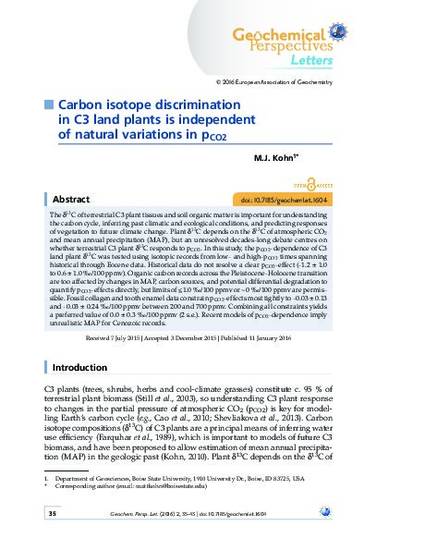
The δ13C of terrestrial C3 plant tissues and soil organic matter is important for understanding the carbon cycle, inferring past climatic and ecological conditions, and predicting responses of vegetation to future climate change. Plant δ13C depends on the δ13C of atmospheric CO2 and and mean annual precipitation (MAP), but an unresolved decades-long debate centres on whether terrestrial C3 plant δ13C responds to pCO2. In this study, the pCO2-dependence of C3 land plant δ13C was tested using isotopic records from low- and high-pCO2 times spanning historical through Eocene data. Historical data do not resolve a clear pCO2-effect (-1.2 ± 1.0 to 0.6 ± 1.0 ‰/100 ppmv). Organic carbon records across the Pleistocene-Holocene transition are too affected by changes in MAP, carbon sources, and potential differential degradation to quantify pCO2-effects directly, but limits of ≤1.0 ‰/100 ppmv or ~0 ‰/100 ppmv are permissible. Fossil collagen and tooth enamel data constrain pCO2-effects most tightly to -0.03 ± 0.13 and -0.03 ± 0.24 ‰/100 ppmv between 200 and 700 ppmv. Combining all constraints yields a preferred value of 0.0 ± 0.3 ‰/100 ppmv (2 s.e.). Recent models of pCO2-dependence imply unrealistic MAP for Cenozoic records.
This document was originally published in Geochemical Perspectives Letters by European Association of Geochemistry. Copyright restrictions may apply. https://doi.org/10.7185/geochemlet.1604
Available at: http://works.bepress.com/matthew_kohn/101/
